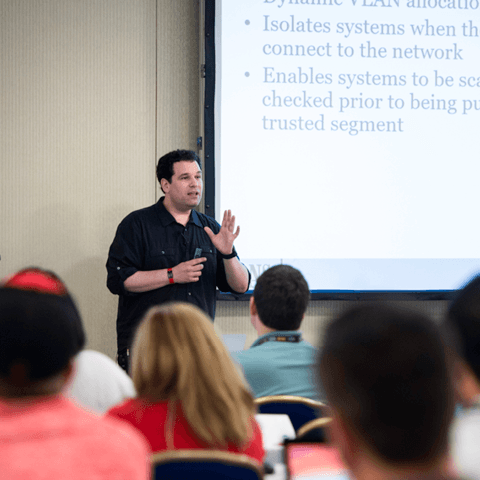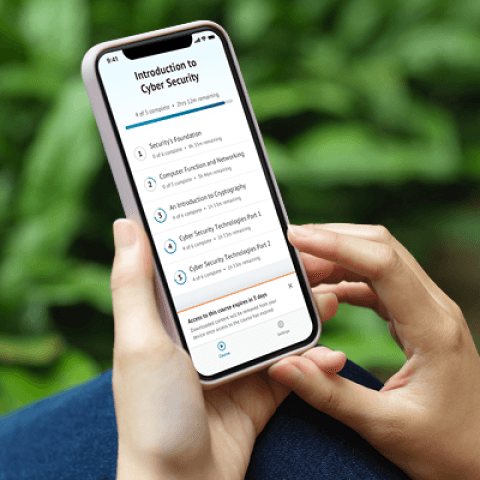SEC595: Applied Data Science and AI/Machine Learning for Cybersecurity Professionals


Experience SANS training through course previews.
Learn MoreLet us help.
Contact usBecome a member for instant access to our free resources.
Sign UpWe're here to help.
Contact UsApply your credits to renew your certifications
Attend a live, instructor-led class at a location near you or remotely, or train on your time over 4 months
Course material is geared for cyber security professionals with hands-on experience
Apply what you learn with hands-on exercises and labs
Learn to perform effective, secure OSINT research with practical techniques. Explore critical OSINT tools and apply your skills in hands-on labs based on real-world scenarios.
[SEC497 is] exactly what I wanted-a hands on, real-world deep dive into OSINT challenges, techniques, strategies and actual tools to use.
SEC497: Practical Open-Source Intelligence (OSINT) provides practical, real-world tools and techniques to help individuals perform OSINT research safely and effectively. The OSINT training course also offers real-world examples of how those tools and techniques have been used to solve a problem or further an investigation. Hands-on labs based on actual scenarios give students opportunities to practice the skills they learn and understand how those skills can help in their research.


Matt Edmondson, Senior SANS Instructor, STI faculty, and Founder of Argelius Labs, authored SEC497 and SEC587. A DHS veteran with 11 GIAC certifications and OSCP, he draws on 20 years of investigations to deliver accessible, real-world OSINT training.
Read more about Matt EdmondsonExplore the course syllabus below to view the full range of topics covered in SEC497: Practical Open-Source Intelligence (OSINT).
This section covers safe OSINT practices, key tools, and OPSEC on a budget. You'll learn to spot risky sites, analyze files, use canary tokens, and create sock puppets. It also introduces research tools, report writing, and offers an optional Linux lab to build command line skills.
This section covers essential OSINT skills like using search engines, finding linked websites, archiving and analyzing web data, and setting up monitoring alerts, all with OPSEC in mind. It also explores image and facial recognition, metadata, mapping tools, and ends with an optional capstone analyzing ransomware chat logs.
This section focuses on investigating individuals or groups by researching usernames, emails, phone numbers, and addresses. It covers fraud detection, social media analysis (including deleted and bot content), geolocation, and methods to access content without an account, while emphasizing privacy and effective research techniques.
This section dives into investigating websites, IPs, and online infrastructure – even for non-tech-savvy students. It explains key concepts, real-world use cases, and tools to uncover info like IP geolocation, DNS records, WHOIS history, cloud data, and more, helping both general analysts and CTI professionals avoid pitfalls and gain deeper insights.
This section explores business research, Wi-Fi forensics, AI, and dark web investigations. You'll learn to triage large datasets, track crypto activity, and automate tasks without coding. It wraps up with resources to continue your OSINT journey, making it a well-rounded and practical mix of topics.
The capstone for the SEC497 course is a multi-hour event which allows students to work together in small groups to create a threat assessment for a fictional client. Students will use the skills learned throughout the course on a variety of real-world sites. The instructor will provide feedback to each group.
Responsible for analyzing data from multiple disparate sources to provide cybersecurity and privacy insight. Designs and implements custom algorithms, workflow processes, and layouts for complex, enterprise-scale data sets used for modeling, data mining, and research purposes.
Explore learning pathThis role uses cybersecurity tools to protect information, systems and networks from cyber threats. Find the SANS courses that map to the Protection SCyWF Work Role.
Explore learning pathAnalyzes data from multiple sources to prepare environments, respond to information requests, and support intelligence planning and collection requirements.
Explore learning pathResponsible for collecting, processing, analyzing, and disseminating cybersecurity threat assessments. Develops cybersecurity indicators to maintain awareness of the status of the highly dynamic operating environment.
Explore learning pathIdentifies collection priorities, develops plans using available assets, and monitors execution to meet operational intelligence requirements.
Explore learning pathEvaluates collection strategies, develops and validates requirements, and assesses performance to optimize collection asset effectiveness.
Explore learning pathThese resourceful professionals gather requirements from their customers and then, using open sources and mostly resources on the internet, collect data relevant to their investigation. They may research domains and IP addresses, businesses, people, issues, financial transactions, and other targets in their work. Their goals are to gather, analyze, and report their objective findings to their clients so that the clients might gain insight on a topic or issue prior to acting.
Explore learning pathCoordinates cyber operations plans, working with analysts and operators to support targeting and synchronization of actions in cyberspace.
Explore learning pathAdd a GIAC certification attempt and receive free two practice tests. View pricing in the info icons below.
When purchasing a live instructor-led class, add an additional 4 months of online access after your course. View pricing in the info icons below.
I appreciate the realism in all of these labs. Students can easily turn around and do real world OSINT investigations with many of these labs.
Very Informative course and provided pointers to numerous breach data sites which could aid numerous investigations.

Very relevant information is provided that can be deployed immediately even by novice users. Excellent!
The module on dealing with large data sets was very helpful. Getting a deep understanding on the challenges large data sets pose and how to work around them is very helpful and practical.

Get feedback from the world’s best cybersecurity experts and instructors

Choose how you want to learn - online, on demand, or at our live in-person training events

Get access to our range of industry-leading courses and resources